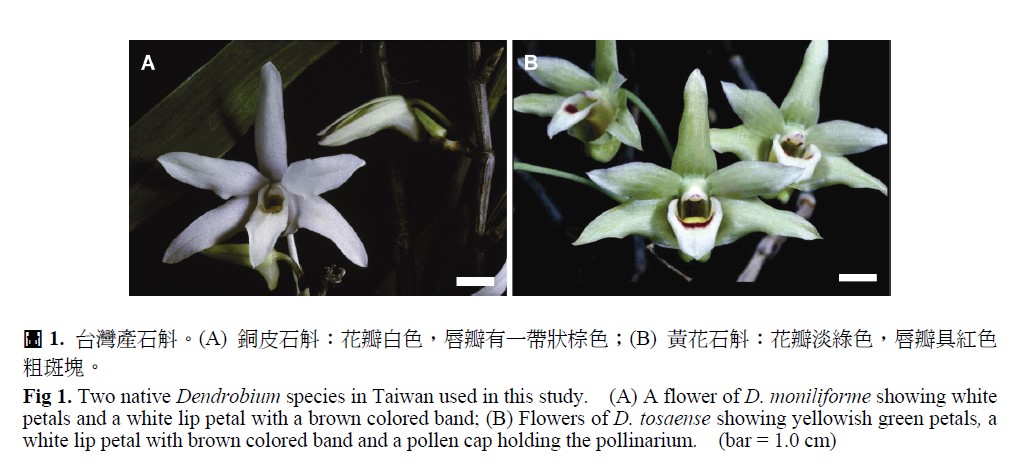All issues

Author:Shu-Fang Lo, Chao-Lin Kuo, Dah-Jing Liao, Chung-Li Chen, and Hsin-Sheng Tsay*
Abstract:
Shi-hu (Dendrobium sp.) is one of the important plants for the traditional Chinese medicine. Dendrobium tosaense and D. moniliforme are the two important native species in Taiwan and they are used commercially as herbs. Seedlings from germinated seeds of D. tosaense transferred onto MS basic salt medium supplemented with 1.5% sucrose, 0.9% Difco agar and 8% banana homogenate or potato juice or coconut water developed into healthy plantlets after culturing for 20 weeks. The 20-week-old plantlets were further transplanted to different culture media (sphagnum moss or tree fern or a mixture of sphagnum moss and tree fern) for ex vivo acclimation. Results showed that 93-100% of the plantlets survived either in sphagnum moss alone or in a mixture of sphagnum moss and tree fern. Seedlings from germinated seeds of D. moniliforme cultured on MS medium supplemented with 1.5% sucrose, 0.9% Difco agar, 8% banana homogenate, 8% potato juice, and 8% coconut water developed into healthy plantlets after culturing for 20 weeks. Transfer of the 20-week-old plantlets into a mixture of sphagnum moss and tree fern for ex vivo acclimation also resulted in the production of 100% healthy plants. Therefore, the mixture of sphagnum moss and tree fern was the best medium for ex vivo acclimation of D. moniliforme and D. tosaense as it significantly increased fresh weight, plant height and number of roots of these plants grown in the greenhouse. Seedlings of D. moniliforme and D. tosaense from tissue culture for 20 weeks, 1 year old greenhouse-grown plants and field-grown plants were analyzed for mineral contents of N, P, K, Ca, Mg, Fe, Mn, Cu, Zn, B and Na. Results showed that concentrations of mineral elements (N, P, K, Fe, Mn, Cu, Zn and B) were high in 20-week-old seedlings from in vitro tissue culture, whereas concentrations of all mineral elements in whole plant of tissue culture plantlets transplanted in the mixture of sphagnum moss and tree fern in the greenhouse for one year decreased significantly (P < 0.05) except for the concentrations of Ca, Mg and Na which remained high. For the whole plant of field-grown plants, the concentrations of all mineral elements were significantly lower than the 20-week-old plantlets from tissue culture. Therefore, the seedlings of D. moniliforme and D. tosaense from in vitro culture are unsuitable for use as Chinese medicine due to high mineral contents; however, these plantlets can be used after an ex vitro acclimation in the mixture of sphagnum moss and tree fern under greenhouse conditions for one year.
Key words:Dendrobium moniliforme, D. tosaense, Culture media, Mineral contents
Download:![]() PDF Links
PDF Links
- 1. Development of Tractor-Mounted Seedling Transplanter for Sweet Potato
- 2. Synergistic Effect of Additional Gas on the Toxicity of Phosphine to Sitophilus oryzae and Sitophilus zeamais (Coleoptera: Dryophthoridae)
- 3. Effects of Temperature and Solar Radiation on Growth Traits and Plant Elements in Purple Leafy Sweet Potato
 Submit your manuscript
Submit your manuscript
 Guide for authors
Guide for authors